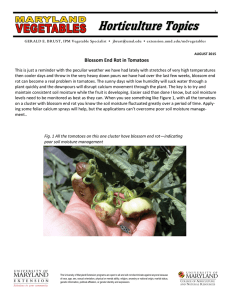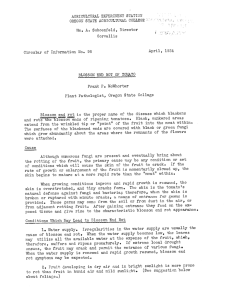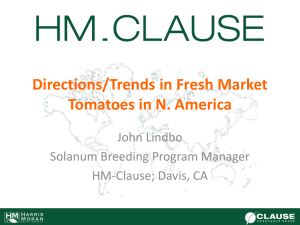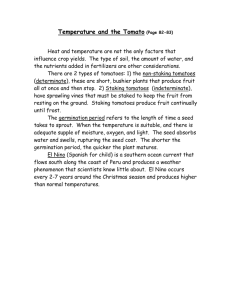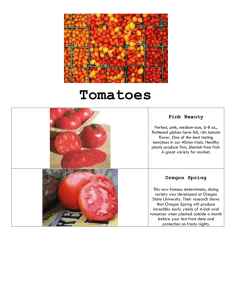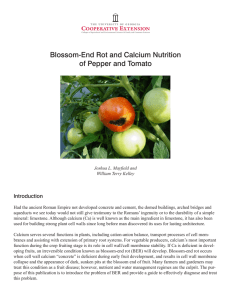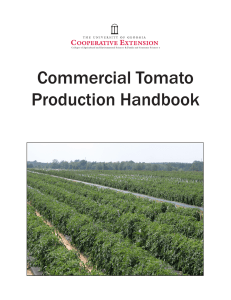Fort Dodge Messenger, IA 07-31-06
advertisement
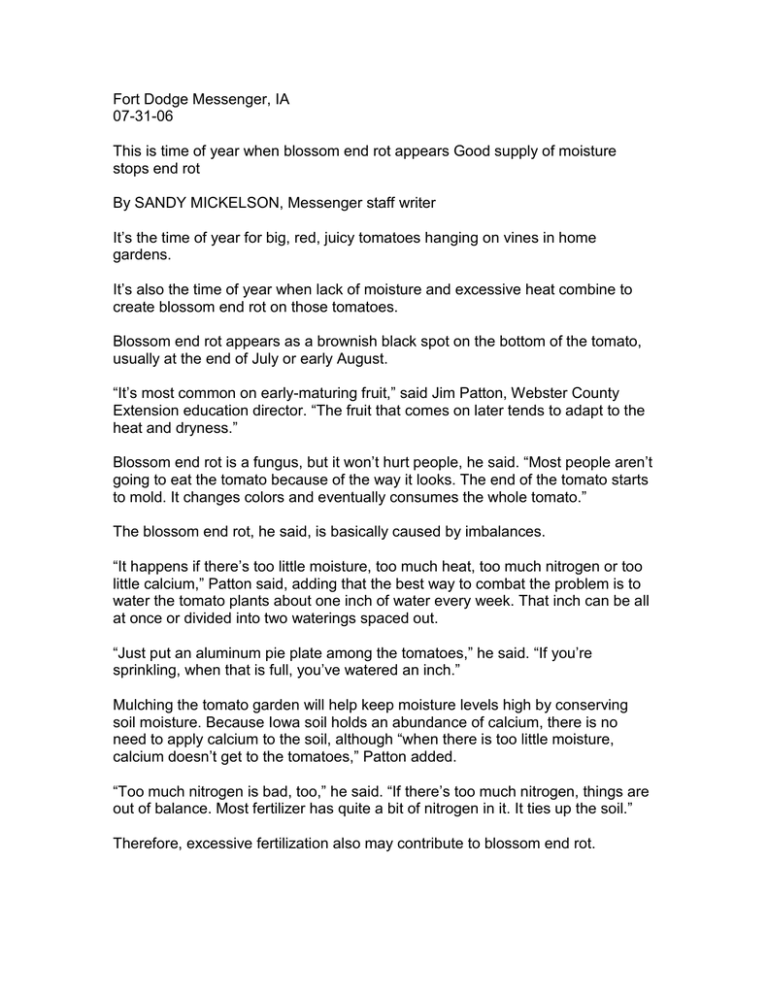
Fort Dodge Messenger, IA 07-31-06 This is time of year when blossom end rot appears Good supply of moisture stops end rot By SANDY MICKELSON, Messenger staff writer It’s the time of year for big, red, juicy tomatoes hanging on vines in home gardens. It’s also the time of year when lack of moisture and excessive heat combine to create blossom end rot on those tomatoes. Blossom end rot appears as a brownish black spot on the bottom of the tomato, usually at the end of July or early August. “It’s most common on early-maturing fruit,” said Jim Patton, Webster County Extension education director. “The fruit that comes on later tends to adapt to the heat and dryness.” Blossom end rot is a fungus, but it won’t hurt people, he said. “Most people aren’t going to eat the tomato because of the way it looks. The end of the tomato starts to mold. It changes colors and eventually consumes the whole tomato.” The blossom end rot, he said, is basically caused by imbalances. “It happens if there’s too little moisture, too much heat, too much nitrogen or too little calcium,” Patton said, adding that the best way to combat the problem is to water the tomato plants about one inch of water every week. That inch can be all at once or divided into two waterings spaced out. “Just put an aluminum pie plate among the tomatoes,” he said. “If you’re sprinkling, when that is full, you’ve watered an inch.” Mulching the tomato garden will help keep moisture levels high by conserving soil moisture. Because Iowa soil holds an abundance of calcium, there is no need to apply calcium to the soil, although “when there is too little moisture, calcium doesn’t get to the tomatoes,” Patton added. “Too much nitrogen is bad, too,” he said. “If there’s too much nitrogen, things are out of balance. Most fertilizer has quite a bit of nitrogen in it. It ties up the soil.” Therefore, excessive fertilization also may contribute to blossom end rot. Richard Jauron, horticulturalist at Iowa State University Extension, recommends picking and discarding tomatoes that show blossom end rot. “The removal of the affected fruit will allow the tomato plant to channel all of its resources into the growth and development of the remaining fruit,” he wrote in an ISU Extension newsletter. Other problems with tomatoes at this time of the summer are fruit cracking and sunscald, Patton said. “Fruit cracking only affects large tomato varieties, like beefsteak,” he said. “Providing enough moisture keeps tomatoes from cracking. Also, if there’s a real dry spell, then a 2-inch rain, the extremes can cause cracking. That plant is trying to compensate for something, and what we see is the cracking.” Cracked tomatoes are edible, he said. They should be washed off and checked for insects, with the cracked area cut away. “It just doesn’t give you that beautiful tomato you see in the grocery stores.” Cracking usually appears at he top or stem end of the fruit. Cracks radiate from the stem or circle the fruit in concentric rings. Cracking appears when a heavy rain or deep watering after a long, dry spell results in rapid water uptake by the plant, Jauron said, adding that “cracking can be prevented by supplying the tomato plant with a consistent supply of moisture during the summer months.” Sunscald, Jauron said, appears as shiny white or yellow areas on the sides of the fruit exposed to the sun. “Later, the affected tissue dries out and collapses, forming slightly sunken, wrinkled areas. Secondary organisms invade the affected areas, causing the fruit to rot. Sunscald occurs on fruit exposed to the sun during periods of extreme heat.” Sunscald can be prevented, Patton said, by keeping the tomatoes away from direct sunlight. “If tomatoes are grown in cages, they tend to be on the insides, and the leaves act as shade,” he said. “So, cages can be a real plus. When the tomato gets sunscalded, it’s going to cause a weakness, and any time you create a weakness, one thing leads to another.” The ISU horticulture Answerline may be reached by calling 294-1871 between 10 a.m. and noon and 1 and 4:30 p.m.. “Monday mornings are always busy,” Patton said, “so you may have to call back.”
